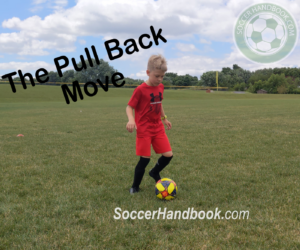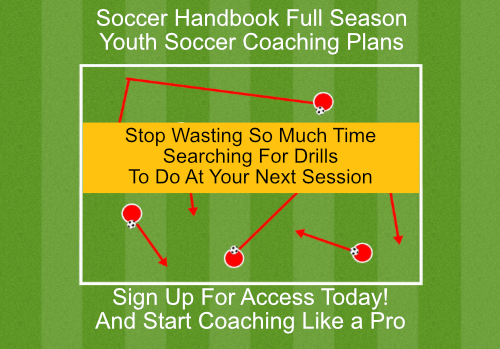We’re going to break down some of the popular myths surrounding soccer ball inflation. You might be surprised by what is actually a myth! Once you’ve read through the list, check out our post if you’re looking for options for soccer ball pumps (including our top picks).
Myth #1: The Most Expensive Balls Don’t Need Reinflated
People think that the reason their soccer ball needs to be pumped up from week to week or between practice is due to the quality of the ball. The good news, this is not the case.
Even a top-tier soccer ball, we’re talking even a top-tier internationally certified match ball, is going to lose air with consistent use.
This is due to the fact that there is a massive amount of force that transfers from your foot through the ball. Adult players typically kick a ball with a velocity between 25 to 75 meters per second!
All soccer balls will lose air over time and use. If you re-inflate your ball and don’t hear any air seeping out, you’re good to go!
Myth #2: Your Soccer Ball Always Needs to be Inflated TO THE MAX

While nobody likes having to kick a flat ball, there are benefits to not pumping your soccer ball until it’s ready to burst, especially your practice ball.
Studies have shown that holding off from inflating a soccer ball to its maximum pressure actually increases a player’s touch and control. Interestingly, the science shows that it does not provide a meaningful advantage to the goalkeeper.
It is also safer for younger players as the reduction in soccer ball air pressure leads to a reduction in force between the ball and a player’s head. This can help to protect younger players (adult players too!) from potential injury while practicing headers.
Myth #3: If Soccer Balls Aren’t Perfectly Round They’re Defective
Because of how often soccer is watched on tv it’s easy to think of a soccer ball as a perfect circle, but typically upon first inflation, it’s normal for a soccer ball to be a little lopsided.
This is due to the internal air bladder likely being creased while the ball was deflated. The best solution is to start using the ball and maintain the soccer ball pressure by checking the air and reinflating as necessary.
If your ball doesn’t retain a more regular shape within the first two weeks of use you may want to contact the manufacturer for a quality control assessment.
You might be thinking, “they should just ship soccer balls inflated and save me the hassle!” which leads us to our next myth…
Myth #4: Soccer Balls Should Be Shipped Inflated

If you check the 1-star reviews on any soccer ball, you’re guaranteed to find at least one that’s due to the customer being upset to receive the ball they purchased deflated.
Deflated soccer balls save you money, here’s how: if every soccer ball was shipped inflated, the price of either the soccer ball, the shipping, or both are going to go up for us— the buyers. That’s because you can fit between two times to three times as many deflated soccer balls into shipping boxes as inflated soccer balls.
It doesn’t stop there though, shipping costs are often based on weight. If you had to ship a pack of team soccer balls, and they were all inflated, you’d have to pay the extra weight just to ship all that air!
Now What?
Now that we’ve broken down some of the most common misconceptions, read our article explaining the best practices when it comes to how to pump up a soccer ball.






